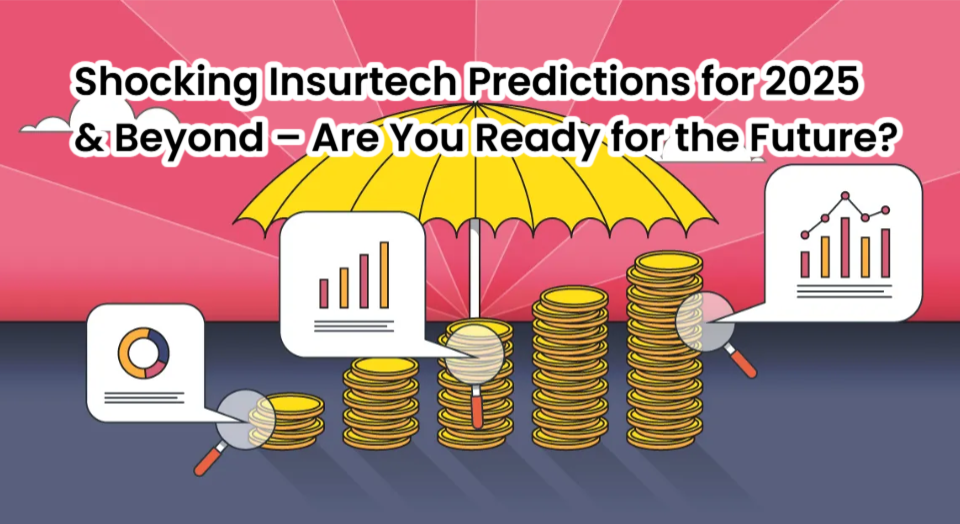As the year comes to a close, the insurance industry is on the brink of a major transformation. With only two months until 2025, insurers face unique challenges and chances. One of the most pressing concerns is the global protection gap, which is projected to reach a staggering $1.86 trillion by next year. This isn’t just a number. It stands for many people and businesses at risk of financial disaster.
Traditional insurance models are struggling to keep pace with a rapidly evolving world. Climate change, cybersecurity threats, and changing demographics create new challenges. We need fresh solutions to tackle these issues. Thankfully, technology is stepping up to the plate. Insurtech is changing the game. New tools such as AI, blockchain, IoT, and data analytics help bridge the protection gap. These advancements are reshaping the insurance industry.
Let’s explore the key trends that will shape the future of insurance in 2025 and beyond.

The Rise of AI and Predictive Analytics
AI and machine learning have already made their mark in insurance, but 2025 will see them reach new levels. These technologies are revolutionizing risk assessment, fraud detection, and claims processing. Insurers can use predictive analytics to analyze big data from IoT devices, social media, and wearables. This helps them craft tailored policies that match each person’s risk profile.
A driver’s behavior can influence their auto insurance cost. Also, wearable fitness trackers allow insurers to provide personalized health coverage. By leveraging AI, insurers can enhance efficiency, reduce losses, and improve customer satisfaction.
Embedded Insurance: Seamless Protection at the Point of Purchase
A thrilling trend on the rise is embedded insurance. This means adding insurance products right into consumer purchases. This makes coverage more accessible and convenient. Embedded insurance will become common in 2025. This includes buying travel insurance while booking a flight or getting device protection when you buy a new phone.
This smooth approach matches today’s digital-first consumers. It will help close the global protection gap by making insurance a natural part of daily purchases.
The Growth of Parametric Insurance
Parametric insurance is changing how claims are processed. Traditional insurance can be slow and complex. These policies use set triggers. For example, a certain amount of rainfall or the magnitude of an earthquake can trigger automatic payouts. Insurers can offer quicker and clearer coverage using real-time data from sensors and satellites. This is especially useful in places that often face climate disasters.
By 2025, parametric insurance will grow beyond natural disasters. It will cover business interruptions, cyber threats, and health risks. This change will make insurance quicker and more efficient.
Usage-Based Insurance (UBI) Becomes the Norm
Gone are the days of one-size-fits-all insurance policies. Usage-based insurance (UBI), powered by IoT and telematics, is set to become the industry standard. UBI helps insurers create fairer, personalized pricing. This includes pay-per-mile auto insurance and health insurance. Premiums change based on your lifestyle choices.
This change will benefit consumers. They will get lower premiums for safe driving, healthy living, and low-risk habits.
Blockchain and Smart Contracts Revolutionize Claims Processing
Blockchain technology is growing. It offers more transparency and efficiency in the insurance industry. Smart contracts are agreements coded on blockchain networks. They will make claims processing easier. Payouts will happen automatically when certain conditions are met. This cuts down on long assessments and lowers fraud. Both insurers and policyholders benefit.
As more people use blockchain, you can expect big cost savings. Settlements will speed up too. This will boost trust and make customers happier.
Climate Risk Analytics and Sustainable Insurance
With climate change posing an ever-growing risk, insurers will be doubling down on climate risk modeling in 2025. New products will come out to tackle climate losses. Also, sustainable underwriting will be a major focus. Insurers will reward businesses and people who use eco-friendly practices. This encourages sustainability in many industries.
Insurance companies will take a more active role in helping communities. They will support resilience against extreme weather events. This will happen through innovative risk-sharing models and public-private partnerships.
Enhanced Digital Customer Experience
The future of insurance isn’t just about better risk management—it’s about better customer experiences. Insurers will keep investing in digital tools. This includes mobile apps and self-service portals. These changes will make buying, managing, and claiming insurance easier than ever.
Look for AI chatbots, virtual assistants, and AR and VR tools. They will make customer interactions more engaging and easy to use. The goal? An easy, smooth insurance experience that meets the needs of today’s tech-savvy customers.
Quantum Computing and the Future of Risk Modeling
Quantum computing is set to revolutionize the way insurers assess risk. Quantum computers can run complex simulations very fast. This will help improve catastrophe modeling, investment strategies, and fraud detection. Quantum-powered risk assessments are still new. However, they will help insurers underwrite policies and manage portfolios with unmatched accuracy.
The Internet of Behaviors (IoB) and Personalized Insurance
The Internet of Behaviors (IoB) builds on the IoT revolution. It lets insurers study customer habits in more detail. Insurers can gather insights from digital interactions, device use, and real-world behaviors. This helps them create very personalized policies. They can also reduce risks before they happen.
Auto insurers might change rates based on a driver’s habits. Health insurers may give rewards for good wellness practices. As privacy concerns are addressed, IoB could redefine how insurers interact with policyholders.
Final Thoughts: A New Era of Insurance
The insurance industry is about to change a lot. Technology and new consumer expectations are leading this shift. In 2025, insurers that use AI, blockchain, parametric models, and embedded insurance will lead the way. These innovations will boost efficiency. They will also make insurance easier to access, fairer, and more responsive to the needs of people and businesses.
For those willing to adapt, the future holds endless opportunities. The next chapter in insurance isn’t just about risk mitigation—it’s about redefining protection, trust, and value for a new generation. The journey has just begun, and the best is yet to come.
Must read:
- Must-Track Metrics! The Top 5 CRM Secrets Every Insurance Agent Needs for Smarter, More Profitable Decisions
- 7 Lucrative & Exciting Career Paths in the Life Insurance Industry You Can’t Afford to Miss!
- Exposed! The Top 10 Shocking Insurance Myths That Are Costing You Money!
